If making a Béarnaise Sauce the classic way seems like too much effort, try this method. There are a few key pointers to ensure success, but otherwise, it's a one pan, 10-minute quick recipe for béarnaise. There's no clarifying butter, no need for blenders and no double boilers. Is it a bit of a cheat? Yes. But don't we all love a cooking hack?
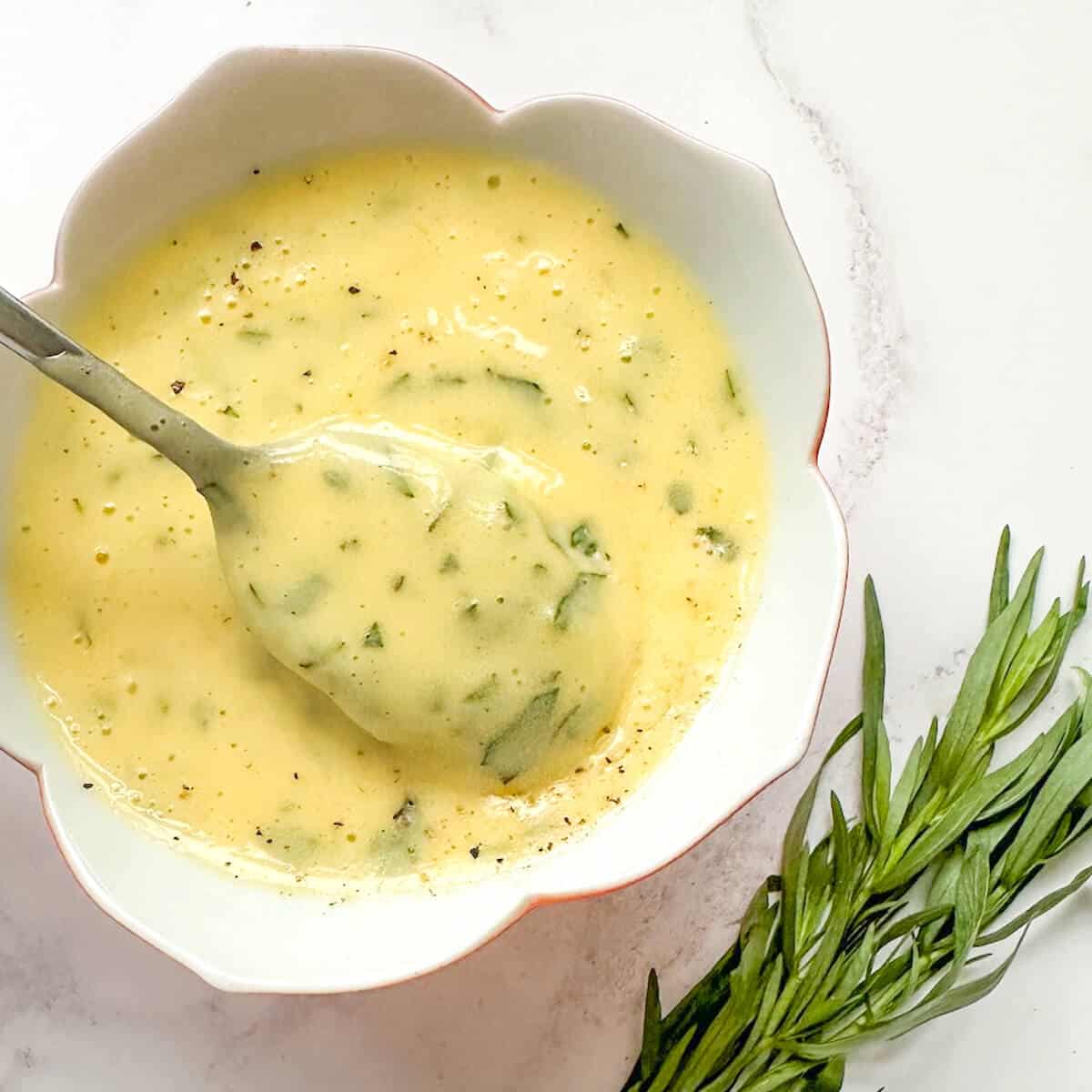
Learning to make classic French sauces is a real boon in the kitchen. Béarnaise sauce is essentially a Hollandaise sauce (one of the mother sauces in classic French cookery) but with added tarragon and shallot. It is the traditional sauce for steak or beef dishes, but it also tastes great with salmon or slathered over steamed asparagus. Usually, it is made by whisking melted butter into egg yolks in a double boiler (bowl over a saucepan of simmering water). But I like to cut out a few steps and bits of equipment and make it in a heavy-based saucepan. Here's how.
Jump to:
🛒 Ingredients
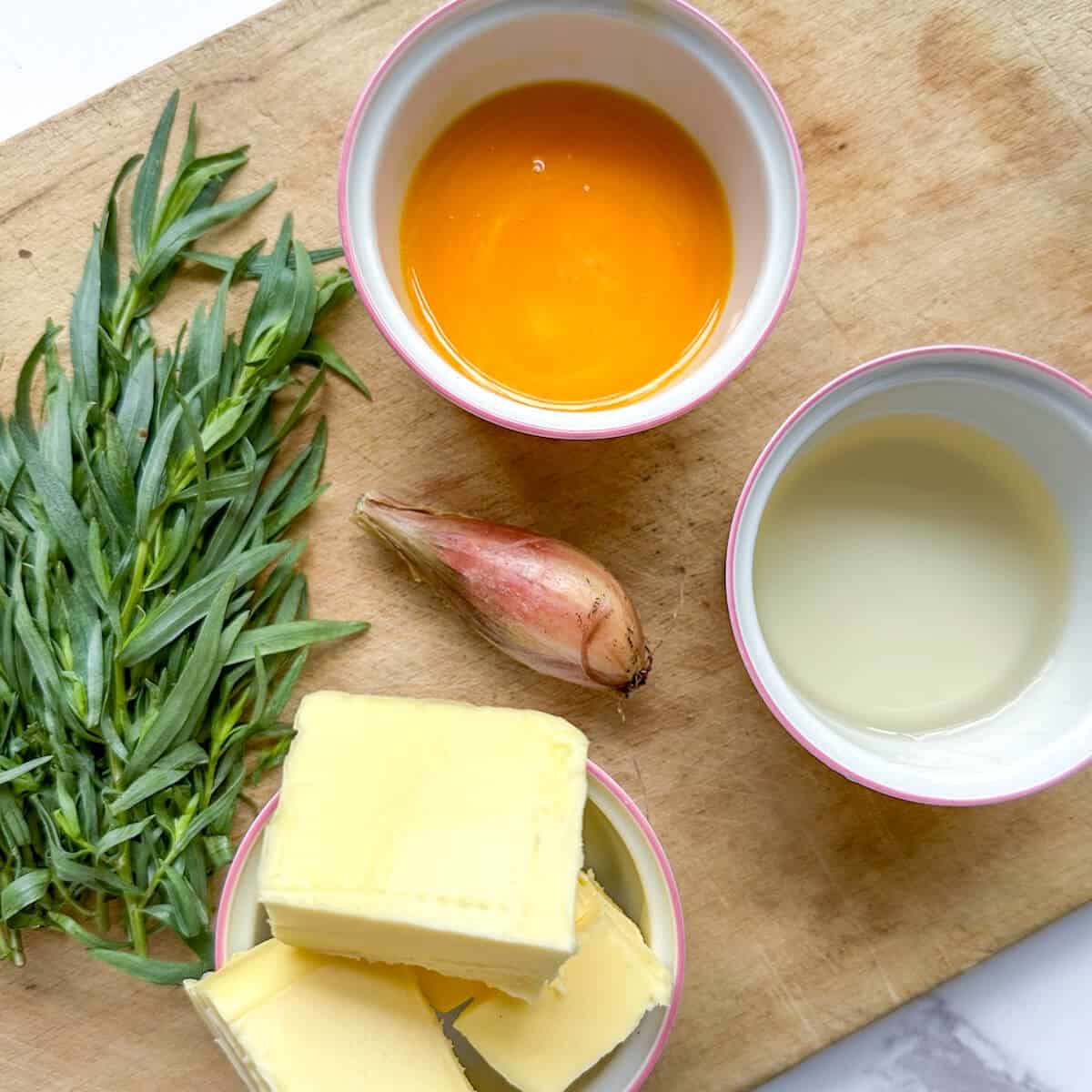
- Egg yolks - Fresh egg yolks are best and must be at room temperature for proper emulsification. You can also use previously frozen egg yolks for béarnaise sauce as long as they are fully defrosted and at room temperature.
- White wine vinegar - If you can get tarragon vinegar, this heightens the flavor. I have included a quick recipe for tarragon vinegar below in case you want to make it. Otherwise, just use white wine vinegar.
- Shallot—I like finely diced shallots in my béarnaise sauce, but you can omit them if you prefer. I normally infuse the tarragon vinegar with shallot, but you can also add a small amount of finely diced shallot to the sauce itself at the end. It will just have a slightly stronger taste.
- Butter - You will need (quite a lot of) good-quality, European-style unsalted butter with a high-fat content (minimum 82%). Do not use butter spreads. The butter needs to be softened and at room temperature, so take it out of the fridge at least an hour ahead of time, weigh it, and cut it into small cubes.
- Fresh tarragon—Using fresh herbs in béarnaise really makes a difference. Avoid dried tarragon unless you cannot get fresh tarragon. If you have leftovers, make this tarragon ricotta tart.
- Salt and cracked black pepper - Season at the final stages to get the balance right.
See the printable recipe card at the bottom of this post for full quantities and step-by-step directions on how to make béarnaise sauce.
👩🏼🍳 Instructions
How to make tarragon vinegar
- Place 4 tablespoons of vinegar, half a finely diced shallot and a couple of leafy tarragon stems into a saucepan.
- Boil it until it reduces to 2 teaspoons in volume. Strain and allow it to cool completely.

How to make easy béarnaise sauce
- Place the room-temperature egg yolks into a small heavy-based saucepan with the vinegar and a teaspoon of cold water. Whisk them together.
- Over low heat, gently warm the egg yolk mixture whilst whisking continuously. Add one cube of butter and whisk until it melts into the egg yolks.
- Slowly keep adding the butter, one small cube at a time, whisking continuously to incorporate it. The mixture will thicken and become creamy. Monitor the heat, and if the mixture is steaming or seems about to split or scramble at any point, remove it from the heat and continue to whisk until it stabilizes again before returning to the heat.
- Once all the butter has been incorporated, add the chopped tarragon and season with salt and black pepper. You should have a thick, creamy, and rich béarnaise sauce. Remove from the heat.
- Pour into a warmed serving jar and serve immediately.
Top tip
The saucepan you use is very important. Heavy, enameled cast iron is best, and thin metal that heats up very fast is the worst. It needs to be slow to warm up, have even heat distribution, and have a thick and heavy base. Otherwise, the eggs will scramble.
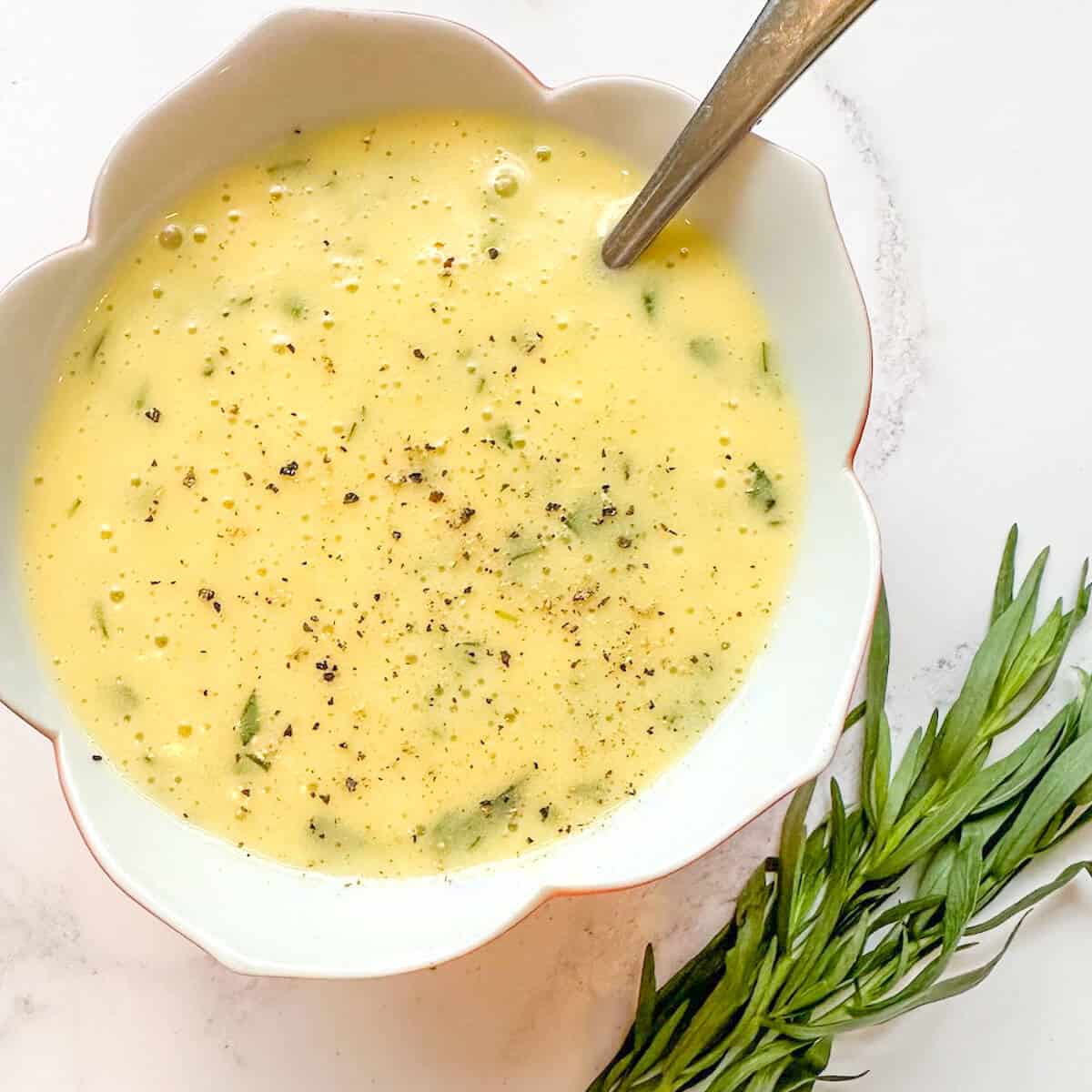
🍽 How to serve
Serve béarnaise sauce with beef dishes like a standing rib roast and tasty sides like garlic potato roses and roasted hasselback carrots. It doesn't keep, so you need to eat it all. Which is no hardship, really.
🥣 Equipment
Always weigh ingredients using a digital scale for accuracy. You will also need a handheld small whisk and a small heavy-based saucepan with good heat distribution and no history of scalding things.
❄️ Storage and Freezing
Sadly, béarnaise sauce (and any derivatives of French mother sauce Hollandaise) will not keep well as the butter hardens over time. Sauces like this need to be served warm, and restaurant chefs will usually make it and keep it in a thermos to maintain the correct serving temperature and consistency. You can place leftover béarnaise sauce in the fridge covered in plastic food wrap and try to reheat it gently by placing it in a bowl over a saucepan of gently simmering water and whisking, but this can have mixed results. Do not freeze béarnaise sauce.
📝 Related recipes
📖 Recipe
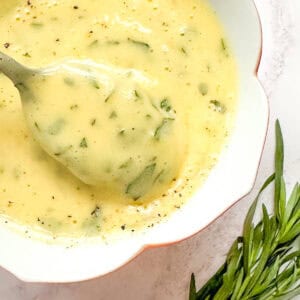
Easy Béarnaise Sauce
Ingredients
Tarragon vinegar
- 4 tablespoon white wine vinegar
- ½ shallot
- 1 tablespoon fresh tarragon finely chopped
Béarnaise Sauce
- 2 egg yolks at room temperature
- 2 teaspoon tarragon vinegar or just use white wine vinegar
- 1 teaspoon cold water
- 130 grams (1 stick + 1 tbsp) unsalted butter must be softened
- 3 tablespoon fresh tarragon finely chopped
Instructions
Tarragon vinegar
- Place the vinegar, diced shallot, and two stems of tarragon (or just the leaves) into a saucepan.
- Boil the vinegar until it reduces in volume to 2 teaspoons, then strain and allow to cool completely (put it in the freezer for 5 minutes).
Béarnaise Sauce
- Place the room-temperature egg yolks into a small heavy-based saucepan with the vinegar and a teaspoon of cold water. Whisk them together until fully incorporated.
- Turn the heat to low. Gently warm the egg yolk mixture and whisk continuously. When it feels warm, but not hot, to the touch, add one cube of butter and whisk until it melts into the egg yolks.
- Slowly keep adding butter, whisking in one small cube at a time. Monitor the heat and lift it off the stove if it ever seems to be on the verge of catching. If the surface ever starts violently steaming, it is too hot and will need a brief time out.
- Once all the butter has been incorporated, remove it from the heat, and whisk in the chopped tarragon, and season with salt and black pepper.
- Warm the serving jug in the microwave or pour the sauce into a thermos to keep it warm whilst serving.
Notes
- This is a high-risk method if you do not have decent cookware. The saucepan needs to have good heat distribution and a heavy base. If it's one of those thin saucepans that heats up very fast and often burns things, it is not the right one for this recipe.
- The butter needs to be at room temperature before you begin. I find this takes around an hour out of the fridge. It is at the right temperature when you press a finger to the surface and it leaves an indent.

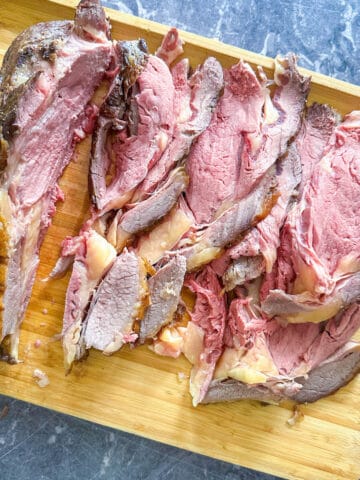
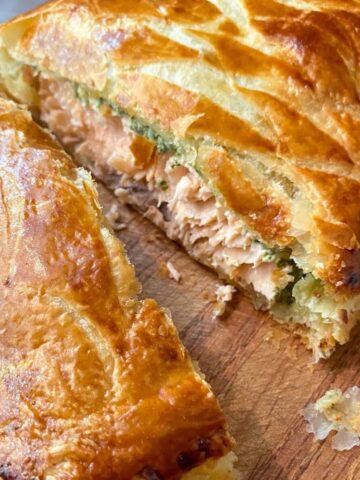
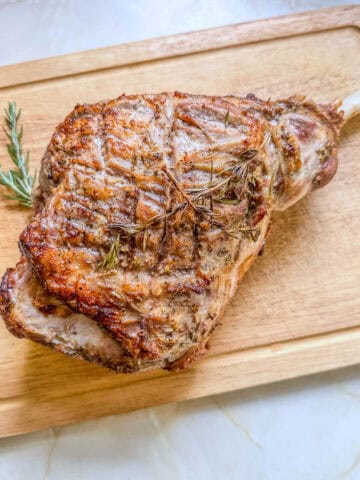
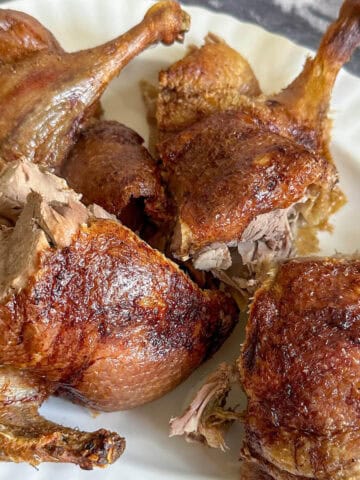
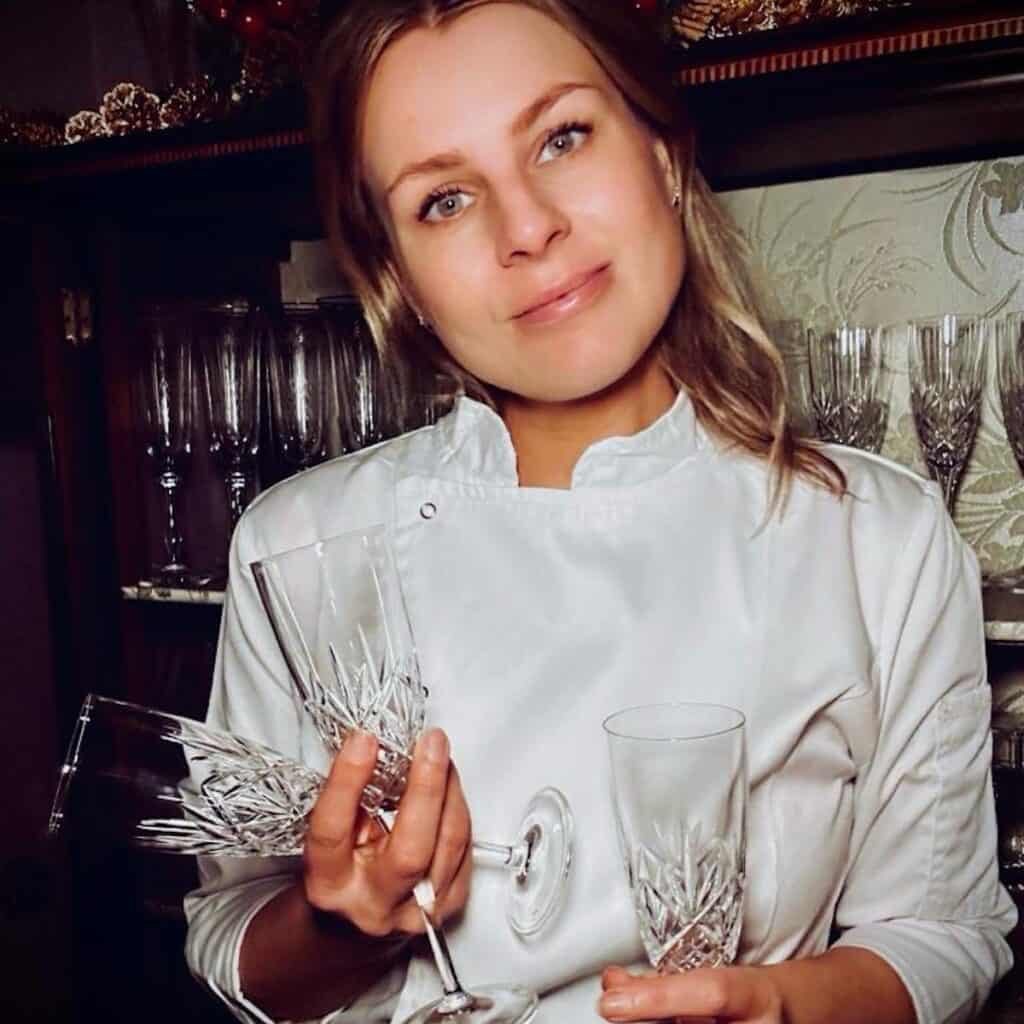




Comments
No Comments